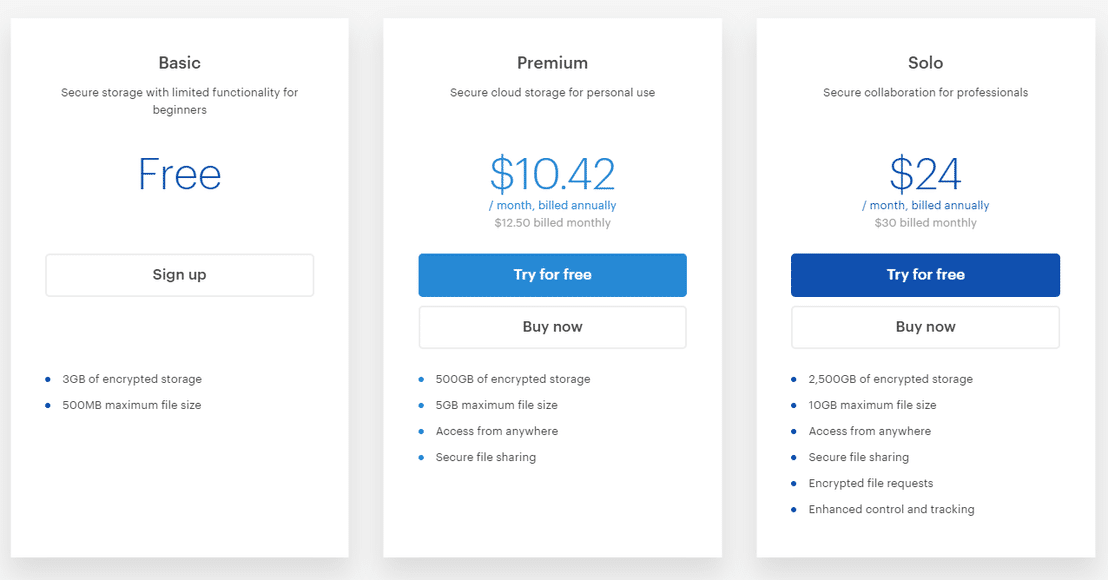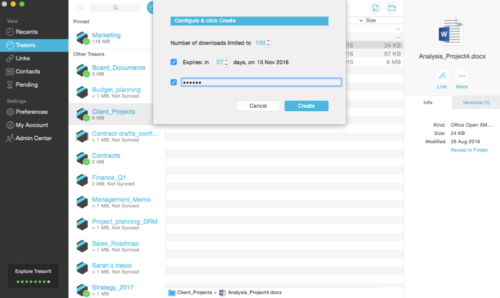

- #Tresorit dropbox for business password#
- #Tresorit dropbox for business download#
- #Tresorit dropbox for business mac#
#Tresorit dropbox for business download#
You can protect these files with a password, expiration date, and a download limit. Much in the same way as many other business file sharing applications, you are able to send links to the encrypted files for individual users to be able to access.

The user interface is well-designed and clean and makes navigating the system efficient and easy to perform the task. Tresorit allows you to share, organize, and sync your files privately and securely.
#Tresorit dropbox for business mac#
To date, Tresorit is supported by many operating systems, including iOS, Android, Windows, Mac OS, and Linux. Tresorit can be accessed via a web browser, mobile applications, and client-side applications. They will revisit it later to see if they can alleviate the issues with it.

Update: Tresorit had disabled and removed the DRM service due to performance concerns. The ability to be able to choose what type of access is available to certain files depending on the permission granted to the user makes this system very much the same as DRM workplace Solutions. This helps prevent any unauthorized file decryption from the server-side. If you use Tresorit, your encryption keys do not reach Tresorit’s servers. Tresorit is a cloud-based service that allows businesses to share and store their files securely while using client-side encryption that guarantees the security of all files once they have left your computer. It had been stressed out every time we review or discuss cloud storage services. To be able to properly understand why Tresorit is one of our choices for secure cloud storage, we first have to review it in-depth.įor each and every company, security is the number one concern that they will have. Instead, it cost way much more than you would be anticipated.
#Tresorit dropbox for business password#
(Note also that this applies to 1Password 4.5 and above for Advanced PIN settings that will allow the Master Password to be temporarily stored (obfuscated as well) in the iOS keychain.No, it’s not cheap in any way. Even when the Master Password was obfuscated in the iOS keychain in 1Password 3, it was never included in anything that synched. But these are never including in synching. We do not want to be in the vaporware is correct that there were (and are) a few cases where the obfuscated Master Password might get written to the iOS keychain. It is so tempting to talk about some of the great things we'd like to bring, but we've been in the situation where we've promised something that was 90% done and the last 10% killed us. Like AgileBits, they are reluctant to talk about new developments until they are actually released. (Their English is excellent so the only communication issues are when I try to "show off" my Hungarian.)īut as pointed out, without an SDK that we can use on mobile devices, we can't integrate on mobile. They, however, are not particularly impressed with how poor my Hungarian is. They have developed to really cool technology. I've actually been having a very nice and helpful conversation with some of the Tresorit people about some technical questions that I had. (Of course I'd like to see more independent analysis this is a "new" thing and there may well be a design flaw that hasn't been spotted yet.) But if you want to have those sorts of sophisticated sharing controls along with genuine end-to-end encryption, this looks like the way to go. This is exciting stuff, though if you are not planning on using their sophisticated sharing features, I don't know whether it is worth the underlying complexities involved. (It's easier for authentication based systems, but authentication based systems allow the server operator to have a great deal of power.) This is a difficult problem for encryption-based systems. Their sharing system also allows the original data owner to revoke permissions granted to others. So imagine getting the sharing of Dropbox (with more fine tuned control of granting, say, "read only" permission) while having the security of say, SpiderOak, where the sever operators have no ability to decrypt your data. Because there isn't an authentication system, the "access" of "ACL" is probably not the right term, but they get behavior which is ACL-like. What makes me so interested in Tresorit, is that they appear to have solved a problem of providing strong ACLs (Access Control Lists) in an encryption-only system.


 0 kommentar(er)
0 kommentar(er)
